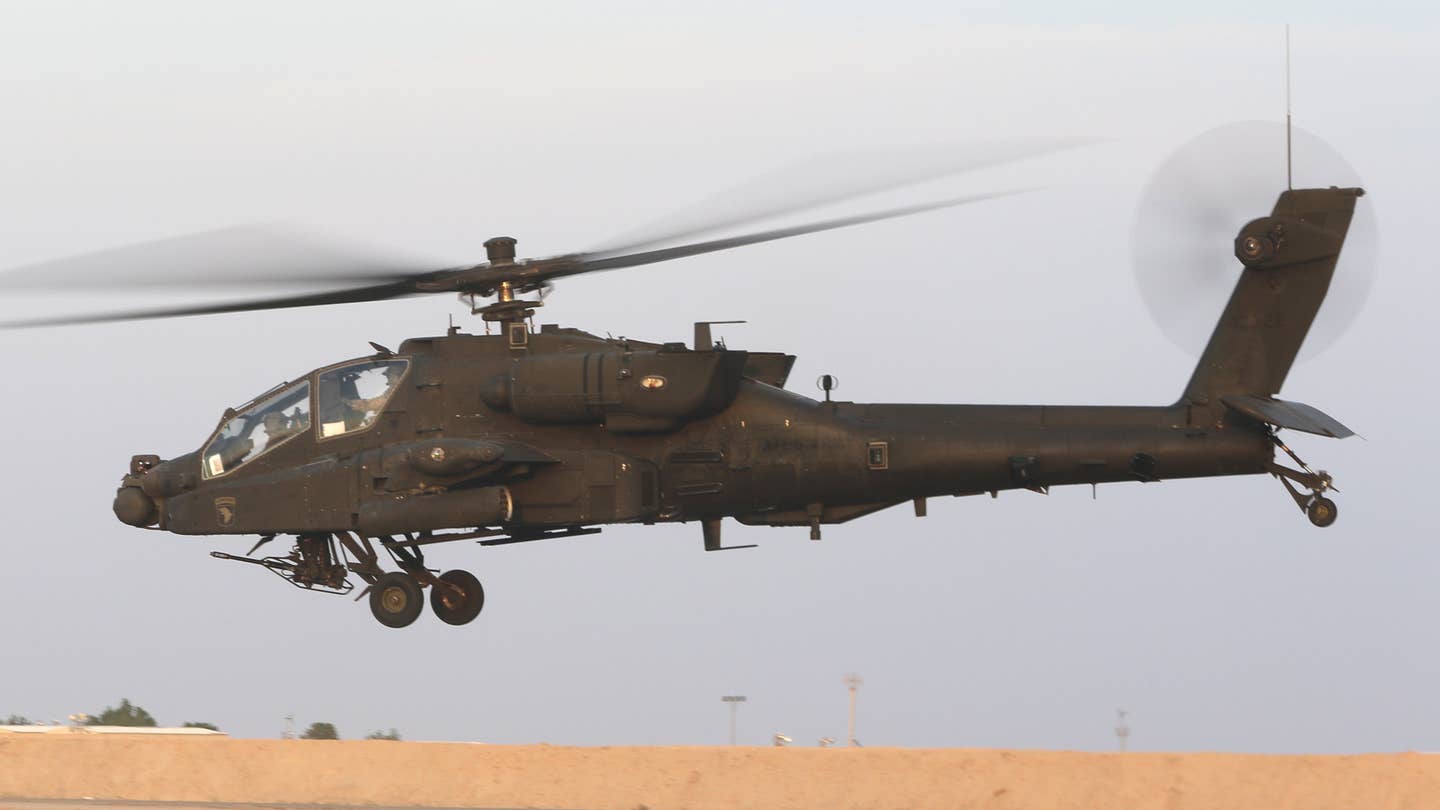The US Army’s AH-64E Apache attack helicopters are now outfitted with the Common Infrared Countermeasures self-protection system, or CIRCM, which offers a robust defense against short-range heat-seeking missiles.
Pictures of Apaches using the system are published on the US military’s Defense Visual Information Distribution Service (DVIDS) website. Some photographs show evidence of forward deployment in the Middle East in October 2022.
Developed by Northrop Grumman, the CIRCM, a directional infrared countermeasures system (DIRCM), provides the helicopters with a crucial extra layer of defense against approaching short-range heat-seeking missiles.
This also includes missiles launched from man-portable air defense systems or MANPADS. MANPADS are highly portable, simple-to-use weapons that can be commanded by a small crew, making them appealing to non-state actors who seek to attack low-flying aircraft like helicopters.
Not to mention, the weapon drew attention due to its successful deployment in the ongoing Ukraine war. It is unknown when the Army started equipping its AH-64Es with CIRCM systems.

However, the Army declared in November 2022 that the CIRCM, installed aboard over 100 undisclosed aircraft, had achieved initial operational capability.
The Army’s UH-60 Black Hawk utility helicopters are known to be equipped with the Northrop Grumman-made defense system, which began full-rate production for the Army in May 2021.
According to Northrop Grumman, CIRCM is a compact technology that uses laser energy to protect aircraft from sophisticated infrared missiles. Its modular open systems architecture is built to evolve over time to counter new infrared threats.
The CIRCM follows infrared-guided missiles targeted at an aircraft using two small pointer/trackers before engaging one of its two lasers to confuse the weapons and prevent them from striking the target.
The CIRCM also supports the existing Common Missile Warning System (CMWS) on Army helicopters. The CWMS detects missiles by electro-optical sensing, which “sees” the missile and alerts pilots to imminent threats through audio and visual cues.
Warning sensors can also be visible on the sponsons that support the pointer/trackers. With CIRCM equipped, Apaches, like the Army’s Black Hawks, can still deploy dispenser ‘buckets’ for decoy flares and chaff.
The installation of CIRCM on Army Apaches is the most recent development in the service’s ongoing efforts to install a DIRCM system of some sort on these helicopters and other ones. This endeavor has been constant since at least 2015.
In response to a pressing operational demand from Middle Eastern special operations forces, the service started looking for a uniform DIRCM system for its helicopters in 2015.
Starting in 2017, the Army installed a variant called AN/AAQ-24(V)N Large Aircraft Infrared Countermeasure (LAIRCM), a different Northrop Grumman DIRCM system, onto some of its Apaches as a temporary solution.
MANPADS Usage In Russia-Ukraine War
The danger that short-range heat-seeking missiles, particularly MANPADS, present to helicopters and other aircraft on modern battlefields have been highlighted by Russia’s attack on Ukraine.
It has been determined that MANPADS are the core of Ukrainian air defense, with the nation receiving more than 1000 US-made FIM-192 Stinger weapons before and during the war.
The Su-34 bomber was shot down by Russian-made Igla systems, also used by the Ukrainian military. Ukrainian air defense units make extensive use of the S-300. Serhiy Chizhikov, a postman in Chernihiv, shot down a Su-35 with a MANPAD.
MANPADS are also mainly used by non-state actors.
Meanwhile, the US Military is also trying to modernize its helicopter fleet. The Army is also working on a broader, more comprehensive effort to replace at least a significant percentage of its AH-64s, UH-60s, and maybe its CH-47s under its Future Vertical Lift initiative.
The service announced in December 2022 that it had chosen Bell’s tilt-rotor V-280 Valor design as the winner of its FLRAA competition, which is currently anticipated to replace its Black Hawks.
However, the contract award is currently being challenged by Sikorsky, a division of Lockheed Martin that, along with Boeing, had pitched Defiant X, an advanced compound helicopter.
The winner of the separate Future Attack Reconnaissance Aircraft (FARA) competition will replace a significant portion of the Army’s AH-64s. Bell’s 360 Invictus and Sikorsky’s Raider X compete for that deal. Additionally, Boeing is promoting a major Apache upgrade package.
- Contact the author at ashishmichel(at)gmail.com
- Follow EurAsian Times on Google News